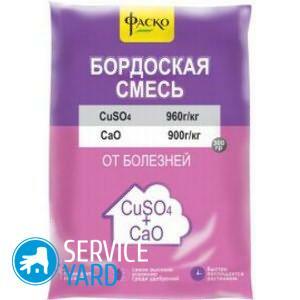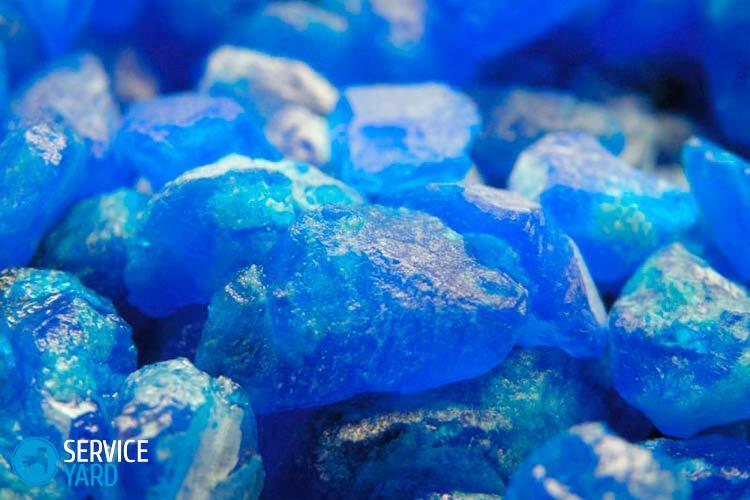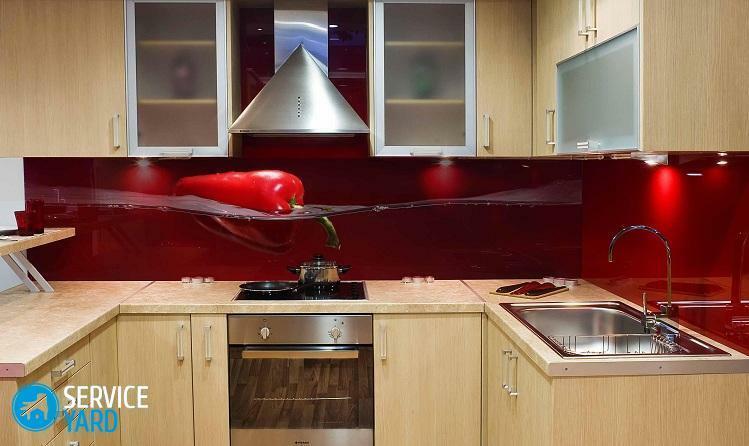
- Where does mold come from, what is it dangerous for?
- Specify the cause of mold in your apartment
- Preventing the appearance of mold
- How to get rid of mold on the walls?
- Other mold remover
Mold is a common problem in modern homes. This is not surprising, because now everywhere are used plastic windows that perfectly hold heat in the room, prevent the penetration of street noise, but they have a significant drawback - poor air circulation in the house. As a consequence - on the slopes of windows, at the joints of the walls appears mold. Of course, the cause of the appearance of fungus can be and increased humidity, as well as poor ventilation in the house. Copper sulphate is an effective means of fighting mold, but to get a working staff, it is necessary to know how to dissolve copper sulfate. The use of copper sulfate against the fungus requires caution and compliance with safety regulations. In the article we will tell you how to plant copper sulfate and how to use it properly.
to the contents ↑Where does mold come from, what is it dangerous for?
Fungus, which appeared on the walls, not only spoils the appearance of the room, but also very dangerous for the health of people living in such a house. Mold can cause:
- headaches;
- constant weakness;
- general ailment;
- respiratory tract diseases.
Important! Spores of a fungus can cause an allergic reaction, trigger an attack of asthma.
Spores of a fungus travel through the air until they reach a favorable environment. With a certain combination of humidity with a high temperature, a gray patch appears on the walls first, and over time a colony of microorganisms acquires a black or greenish tinge. In addition, the mold begins to exude an unpleasant odor, which is very difficult to remove. One of the few tools that can save from this scourge is copper sulfate, the application against the fungus which has been carried out for a long time.
Important! Favorite places of mold: bathroom, toilet, kitchen, cellar, balcony and all rooms where it is damp, warm. Fungus spoils not only the walls and ceiling of the house, but everything around: wallpaper, tile, carpet, clothes, furniture, books, refrigerator and washing machine.
This uninvited and harmful "guest" comes quietly, but develops and spreads very quickly. So it's necessary to fight with the "lodger" immediately, from the very first moments of his appearance.
to the contents ↑Specify the cause of mold in your apartment
To once and for all say goodbye to the fungus, first of all you need to identify the cause of its appearance and immediately eliminate it. Favorable conditions for the reproduction of mold are:
- High air temperature( from 20 degrees).
- High humidity.
- Poor ventilation.
All these conditions can be created in violation of the norms of construction work:
- Poor waterproofing of walls.
- No insulation of wall joints.
- Improper and poor installation of windows.
- Dampness in the basement.
- Problems with plumbing and sewerage.
Preventing the appearance of mold
To get rid of mold for good, it is necessary to eliminate the conditions for the appearance and reproduction of the fungus simultaneously with the treatment of the infected room with copper sulfate. For this it is recommended to conduct very simple but effective preventive measures:
- Keep plumbing and plumbing in order.
- Do not allow walls and floors to subcool in the room.
- Regularly ventilate all rooms and technical rooms.
- Tidy up the ventilation system.
- Do not allow moisture in the apartment to rise - never hang wet clothes, do not boil water for long periods in saucepans, etc.
- In rooms with high humidity, install additional heat sources.
- Limit the number of indoor plants.
- When installing furniture to external walls( outdoor), leave a small space for air circulation.
- When replacing wooden windows with plastic, take care of additional ventilation. This is especially important if the ceiling and walls are covered not "breathable" materials - plastic panels, ceramic tiles, MDF panels or non-woven, vinyl wallpaper.
- Keep clean at home, as mold pores adhere to dust and spread to all areas. Where it is clean, the fungus rarely appears.
- After each wet cleaning, be sure to ventilate the room.
- For repair, use only moisture-resistant building materials and do not forget about antiseptic substances.
How to get rid of mold on the walls?
Mankind is constantly fighting fungus, using both folk methods and chemical preparations. Applied to combat mold and mechanical methods, eliminating fungal spores scraping, as well as using quartz lamps, ozonizers and other devices and methods.
One of the most common methods of combating mold is copper sulfate, the application against the fungus which is available and effective. The preparation is in the form of a powder or granules of blue color. It can be purchased in any economic, construction markets and any other stores offering goods for the garden and garden. 
How to dissolve copper vitriol to treat walls from mold?
For the treatment of walls it is necessary to prepare a working solution. To dissolve copper sulfate, proceed as follows:
- Collect warm water in the container.
- Dilute copper sulfate in water at a rate of 20-30 grams per liter of water.
- Finish the finished product thoroughly.
- To increase the effectiveness of the product, add 1 tbsp.spoon of vinegar.
- If the fungus has developed greatly over the wall, then use the following solution: 10 liters of water of 200-400 grams of powder and 200 grams of vinegar or any consumer product containing chlorine.
Important! When working with copper sulfate to observe safety rules - Protect your hands with rubber gloves, eye protection from accidental splashes glasses, cover the mouth and nose breathing mask or gauze bandage.
After the solution has been prepared, start the treatment of the walls.
Instructions for treating walls with copper sulfate:
- Clean the walls from the wallpaper. Immediately discard the strips of wallpaper, as they can remain spores of the fungus.
- With a spatula, carefully remove the affected plaster.
- Clean the treated surface with sandpaper to get rid of the unseen lesions.
- Wipe the cleaned surface with a soap solution to increase the efficiency of further processing.
- Allow to dry the wall for several hours.
- Pour the solution into a spray gun.
- Wear protective equipment.
- Use a spray or kitchen sponge to apply the prepared solution to the cleaned areas of the wall.
- Allow the medium to dry for 3-5 hours.
- Re-carry the copper sulfate - so applying it against the fungus will be more effective.
- Treat the treatment 2-5 times, depending on the degree of infestation of the walls.
- After the last treatment, allow the walls to dry properly.
- After treatment, limit the residence time. After 2-3 days the solution will completely dry out and will not pose a hazard to human health.
- Begin to plaster the walls and glue the wallpaper.
Important! During the treatment of the room, open the windows and turn on the hood, so as not to poison the copper sulphate vapor. Wash clothing at the end of work thoroughly and dry it in the fresh air.
Useful advices:
- To completely treat the walls from the fungus, 3-4 buckets of solution are enough. Do not feel sorry for copper sulfate when used against fungus, because it is inexpensive.
- Decorative panels made of wood and baffles are coated with colorless varnish to protect the materials from rot and damp, which means - from the fungus.
- Slots in the wall should be treated with sealant before applying the plaster. Do not be superfluous and surface treatment by any purchased antiseptic.
Other mold remover
Various antiseptic agents can be used to control fungal spores. However, it should be remembered that all antiseptic drugs are poisons, and when working with them, you must strictly follow the instructions and observe safety measures.
Primer
This proven product can be purchased at any construction store. Antiseptic primer not only helps in the fight against the fungus, but also protects the walls and interior items from the appearance of spores of microorganisms.
Application features:
- Usually antiseptic primer is sold ready-made, but sometimes it needs to be diluted with water.
- Before using the drug, be sure to read the manufacturer's instructions.
- Before applying the primer, the surface must be thoroughly cleaned to a brick or concrete.
- Apply the compound only on a dry wall.
- Use a normal brush for surface treatment.
- After the primer has completely dried, you can proceed to the decorative coating of the walls.
Bleach
This preparation is no less effective than a primer, however it is cheaper. The use of bleach will remove the surface from any kind of fungus. In addition, bleach containing chlorine, destroys not only the mold, but also spores of microorganisms.
To prepare the working solution, dilute 1 liter of bleach in 10 liters of water. The room in which the treatment is carried out should be well ventilated.
Important! Be sure to protect yourself with personal protective equipment before using the product.
Vinegar
An accessible and universal folk remedy - vinegar, is also capable of destroying a fungus. The use of vinegar is safer, although the smell of acid is not very pleasant.
Vinegar is applied to the affected areas with a spray or sponge for washing dishes. After an hour after treatment, rinse all surfaces with water and thoroughly ventilate the room.
Important! For the purpose of prevention, treat the problem areas with vinegar 1 time per 7-10 days.
Hydrogen peroxide
Another popular method for combating mold is the use of hydrogen peroxide( 3% solution).Peroxide does not smell and does not emit harmful substances. You can buy the drug in any pharmacy.
The use of peroxide is a very effective method, but there is one drawback - bleaching of the surface. Therefore, hydrogen peroxide must be used carefully on painted surfaces and furniture.
Important! In addition to the above antiseptic drugs, to control the fungus, you can use and folk remedies, such as ammonia and soda:
- Spread the liquid ammonia on the affected surface.
- Prepare a solution of baking soda: 1 tbsp. Spoon the product with 200 grams of water.
As you can see, there are many methods of combating fungus and mold, but still the most effective of them is the prevention of the appearance of microorganisms. Protect your home from uninvited "guests"!



